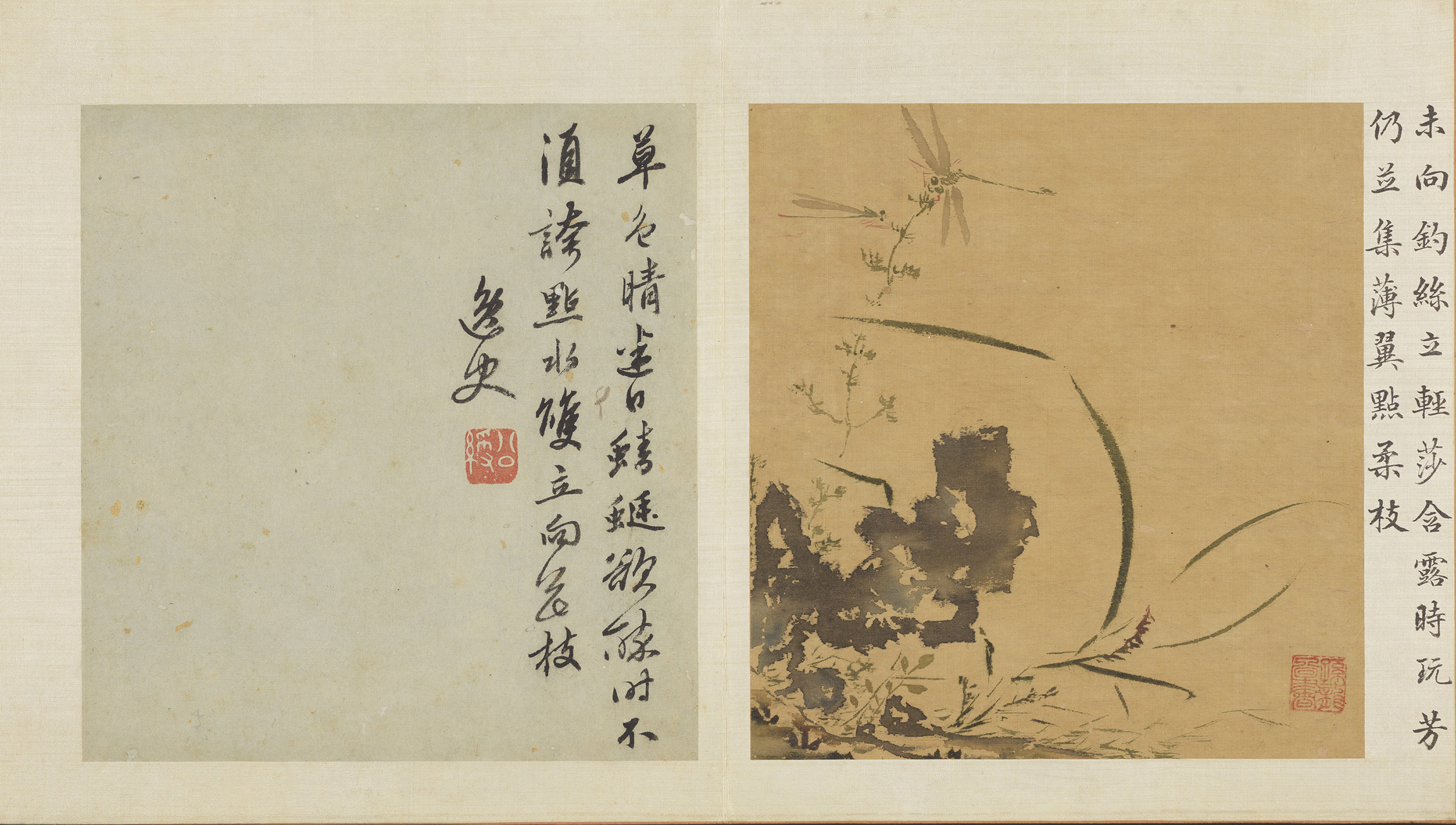Selections
-
At Ease Among Cloudy Mountains
- Mi Youren (1074-1153), Song dynasty
Mi Youren (1074-1153), who went by the style name Yuanhui, was the eldest son of the painter, calligrapher, and poet Mi Fu (1051-1107). Mi Youren learned these arts from his father, eventually earning equal fame for his mastery of them. A pale ink wash was used to depict the clouds on this scroll, while the "moss dot" technique of painting with a flattened brush tip was employed to define the landforms. The faint blending of the ink and wash used for the clouds and mist lends them their aura of roiling transformation. With its indistinct traces of brushwork and subtle use of ink, this painting is a representative work of the Mi family's paintings of misty mountains.
Extant works by Mi Youren are extraordinarily rare; this work is one of the finest long scroll landscape paintings that can credibly be attributed to him. Paper affixed to the back of the scroll is inscribed with calligraphy in Mi's own hand. Following this are introductory remarks written by Zeng Di (1109-1180), Wu Kuan (1435-1504), Dong Qichang (1555-1636), Lou Jian (1567-1631), Gao Shiqi (1644-1703), and Da Chongguang (1623-1692). -
Zizhi Mountain Studio
- Ni Zan (1301-1374), Yuan dynasty
Ni Zan (1301-1374) was a native of Wuxi in present day Jiangsu province. His style name was Yuanzhen and he used the sobriquets Yunlin (Cloud Forest) and Yuweng (Stubborn Fellow). Coming from a wealthy family, he built himself a retreat called the "Clarity and Quietude Pavilion" where he collected ancient calligraphy and paintings. He is considered one of the Four Masters of Yuan dynasty painting.
This ink and wash painting reveals riverbanks, a sparse grove of trees, and a tiny pavilion nestled amid bamboo. On the far banks of the river can be seen the rise and fall of a mountain's crest. This sparse, neat composition breathes a sense of clarity achieved in seclusion and sparsity into the painting. To create this refined, muted monochrome work, Ni used the body of the brush to vigorously trace the mountains' edges. He was especially forceful when painting the bamboo, lending the work a uniqueness that places it among the masterpieces of misty landscapes. Although undated, the style of this painting indicates that Ni Zan painted it around his seventieth year. -
Delicate Mists Gathering in a Cloudy Forest
- Fang Congyi (1301-after 1378), Yuan dynasty
Fang Congyi (1301-after 1378) was styled Wuou and had the sobriquet Fanghu (Square Pot). He was a Daoist of the Orthodox Unity order, based in the Highest Purity Palace on Longhu Mountain in present day Jiangxi province.
This work bears an inscription reading, "Ding-si year of the Hongwu reign period (1377), by Fanghuzi as a gift for Zheng Zhi'an upon his return to the court." This painting depicts steeply ascending triangular mountains, the centermost of which serves as the central axis of the composition. The mountains on either side extend horizontally amid a foment of white clouds. Fang paid homage to Mi Fu's (1051-1107) style in this painting to create a landscape evocative of the spirit of the Daoist holy mountains. Shen Zhou (1427-1509) left an inscription on the back of this work lauding Fang for using Mi Fu's painting techniques so masterfully that brush and ink seem to have merged into oneness. This painting was entrusted to the NPM by six members of the Lin family, including Lin Handong. -
Sketches from Life
- Sun Long (15th century), Ming dynasty
Sun Long (15th century), from Piling in present day Jiangsu province, had the style name Tingzhen and the sobriquet Duchi. He served as a court painter specializing in depictions of flowers, birds, and plants during the reign of Ming dynasty emperor Xuande (1426-1435).
Comprising twenty folios, the illustrations in this booklet were painted in ink wash with colored detailing. The silk upon which the images were painted was impregnated with alum. This step allowed Sun to use a wet brush without the ink bleeding into the silk, and further allowed him to add subsequent layers of ink before the layers below dried. These innovations helped Sun create a unique effect of blended ink and pigments. There are inscriptions on each image's mounting fabric and the adjoining paper panels which were written by the Qing emperor Renzong (Jiaqing) and the Ming era artist and prefect Yao Shou, respectively. The folios on display are entitled "Aquatic Plants, Fish, and Shrimp," "Plants, a Stone, and a Dragonfly," "Plants and Insects," and "Egrets on an Embankment Under a Willow Tree." -
Guxi Changchen
- Yu Xing (ca. 1692-after 1767), Qing dynasty
This painting by Yu Xing (ca. 1692-after 1767) depicts the Old Summer Palace, known in Chinese as the Yuanmingyuan, outside of Peking. The central structure, named "The Peony Pavilion," was used by emperors to enjoy viewing the seasonal flowering of peonies. In the ninth year of Emperor Qianlong's reign (1744) the pavilion was renamed "Bright Moon Cuts Through Clouds." This poetic name change commemorated Qianlong's first ever meeting with his grandfather, Emperor Kangxi, while he was enjoying the peonies in front of this building at the age of twelve.
"Guxi" is the name of one of the twelve tones from classical Chinese music, while "changchen" is a word that means "flourishing age." According to Treasured Books of the Stone Moat, this painting was originally part of a series entitled "Imperial Illustrations of the Twelve Months," where it represented the third lunar month. This series was painted by four artists alive during Emperor Qianlong's reign, including Ding Guanpeng, Zhou Kun, Yu Xing, and Shen Yuan, each of whom painted three scrolls. Each painting was inscribed with one of Qianlong's poems.












